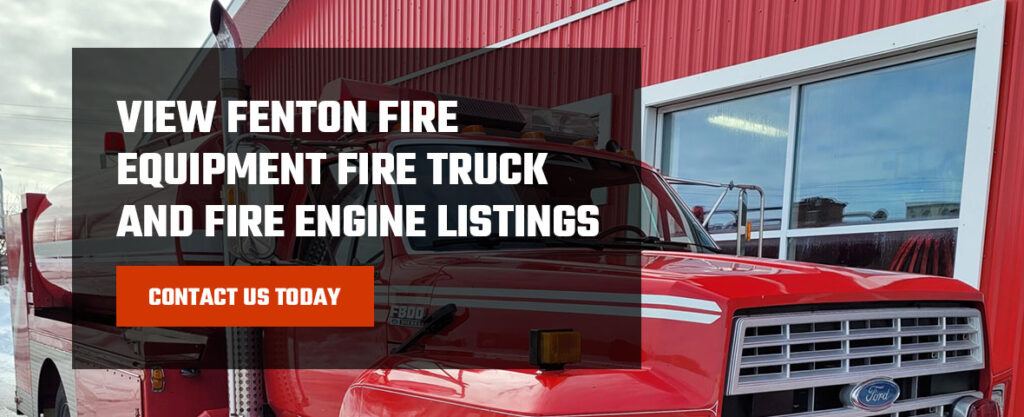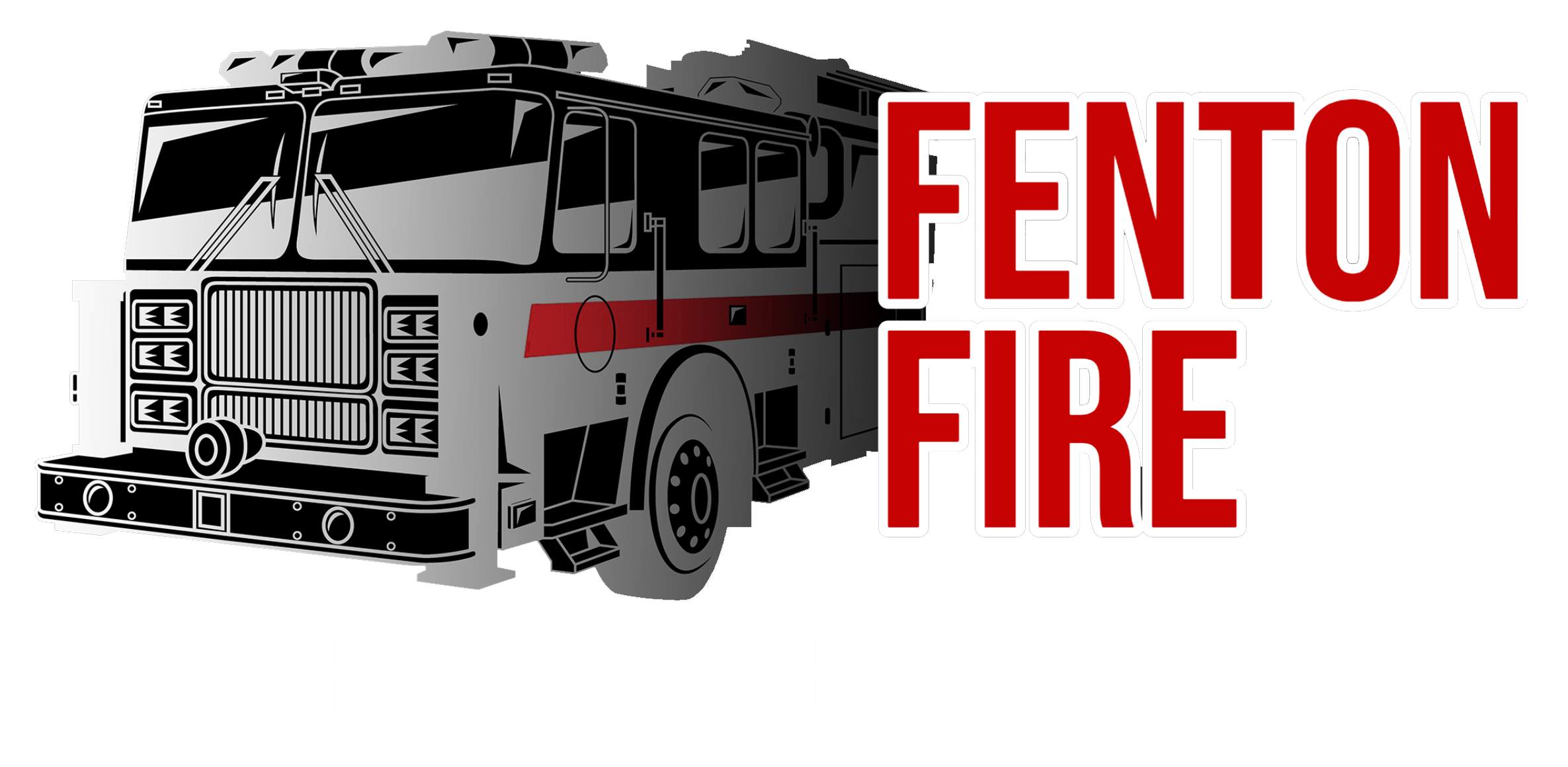Fire engine, fire truck, fire apparatus — people often use these terms interchangeably, but there are some important differences. Fire engines are usually the first to respond to a fire. They carry water and hoses and quickly get to work putting out the blaze. A fire truck, or fire apparatus, is fully equipped to conduct search and rescue operations in fire and other emergencies.
Take a look at a fire apparatus vs. a fire engine to determine which is right for your applications.
Difference Between a Fire Truck and a Fire Engine
The main difference between the two involves the operations that they perform. A fire engine carries water, a pump and a hose to extinguish fires. Firefighters on a fire engine will apply water at high pressure to extinguish a fire. Traditionally, fire trucks don’t carry any water. They have an aerial ladder that enables firefighters to access a building and perform functions like rescues.
Firefighters on a fire truck focus on getting inside to rescue victims. They may also ventilate the roof or other parts of the building to stop the spread of the fire and make it easier to get inside. If the fire grows unpredictable or too large for the firefighters on the fire engine to control, the fire truck may assist the fire engine with containing the blaze. It’s common for the fire engine to be the first on the scene to contain the fire, with the fire truck following closely behind.
Because they have different tasks, fire engines and trucks often have different equipment and tools. Fire trucks need essential rescue tools such as Jaws of Life and hydraulic ladders to save trapped victims.
Fire trucks also often contain thermal imaging cameras that allow firefighters to assess safe areas to enter a building and detect victims’ body heat so they know where they are in the building. Fire trucks also have self-contained breathing apparatus (SCBA) that firefighters use to breathe clean air in a fire. They also have specialty rescue equipment like harnesses, ropes and belay devices.
Fire engines may also have similar equipment, but this is rare. The most important tools on a fire engine are high-powered water pumps, water tanks equipped with gallons of water and long water hoses to put out the blaze. Fire trucks also tend to be larger and longer than most fire engines.
What Is a Fire Engine?
Fire engines, also known as pumpers, primarily aim to suppress a fire. Though each fire is different, the team usually works together to find the source of the fire and direct water at the base of the fire. These vehicles are equipped with three main components that firefighters use to put out fires:
- Water tank: Fire engine tanks vary in size. They usually hold between 500 and 750 gallons of water. These tanks can empty very quickly, depending on the type of hose and nozzles used. For this reason, fire engines can connect to another water supply — fire hydrants being the most common secondary source. They can also draw water from reservoirs, lakes, ponds or pools.
- Fire pump: Most fire engines use a centrifugal pump in which a spinning propeller creates pressure to move the water. This pump can move large amounts of water, about 1500 gallons per minute, from a water tank or a source like a fire hydrant to put out a fire.
- Hose: The hose enables the water to move from the sources to the pump and out the nozzle. Fire engines usually have different configurations in their hoses for various purposes.
In addition to these three components, fire engines carry essential tools like ground ladders, various nozzles and rescue ropes.
What Is a Fire Truck?
Fire trucks generally don’t carry water or have a pump, except for specialty trucks known as Quints. Firefighting apparatus is another common term people use to refer to a truck. They have less to do with putting out the fire and are more involved in other functions.
The main component of a fire truck is a hydraulically powered ladder called an aerial ladder. This ladder is mounted on the fire truck and reaches between 75 and 100 feet when extended. One of the main features of this ladder is that it allows firefighters to access multistory buildings.
Fire trucks have ground support stabilizers called outriggers that allow firefighters to use them safely. These hydraulically powered stabilizers extend underneath the truck to the ground. They create a stable support base that lifts the truck partially off the ground, making it safe for firefighters to load the ladder without tipping over. Because a fire truck is larger than a fire engine, it can carry more equipment and tools, including the following:
- Power tools like circular saws, Jaws of Life and chainsaws
- Airbags to lift heavy objects
- Rescue equipment like harnesses and ropes
- High-power electric fans to pull out smoke
One of the duties of a firefighter on a truck is ventilation, which involves removing smoke, heat and toxic gases from the building. They do this through the roof, doors or windows, making navigating the scene easier for victims and firefighters. Fire trucks are also handy for non-fire-related emergencies such as technical cliff or trench rescues.
Factors to Consider Before Buying a Fire Truck or Fire Engine
Now that you know the difference, how do you choose the right vehicle? There are a few things that you need to consider before making your choice:
- Your area and risks: What operations does your department carry out? Do you mainly respond to non-fire-related emergencies, or are you primarily responding to fires? Understanding the nature of the emergencies in your area can help you make the right choice. Look into the types of calls that you get, the buildings that you deal with — whether they are high-rise or mostly small homes — and the frequency of other emergencies. Knowing what risks you face in your area will inform your choice.
- The team you’re transporting: How do your firefighters get to a scene? The vehicle you choose needs to have enough room onboard. You may have a few firefighters on your truck or engine and have the others arrive separately. Think about how they usually reach the scene and what works best for you.
- Your water needs: Water is essential when fighting fires. The area that you live in will also dictate how accessible water is to you. If you operate in a city, hydrants are usually easily accessible. In smaller towns, they may be scarce. Water accessibility will determine the size of the tank on your fire engine. You’ll want enough water so firefighters can begin working on a fire while the rest of the team sets up a secondary supply.
- Your equipment load: Think about the types of scenes you respond to and the number of vehicles that respond. If you have a smaller fleet, you may need a vehicle with greater storage capacity to ensure you have all the essential tools. Bigger fleets can easily spread out equipment. The more gear you need, the fewer firefighters you can carry.

View Fenton Fire Equipment Fire Truck and Fire Engine Listings
Even though fire trucks and fire engines are similar, they serve different functions in fires and other emergencies. Fire engines have water tanks, pumps and hoses to extinguish a fire quickly. Firefighters mostly use fire trucks to ventilate buildings and rescue victims from fires and other emergencies. To choose the right vehicle, you need to understand the scenes you respond to and your department’s unique needs. The right vehicle can help you and your team to carry out rescue operations seamlessly.
Fenton Fire Equipment has a selection of new and used fire trucks, vehicles and firefighting equipment. Visit our website or contact us today to find the right fire truck or engine for you!
